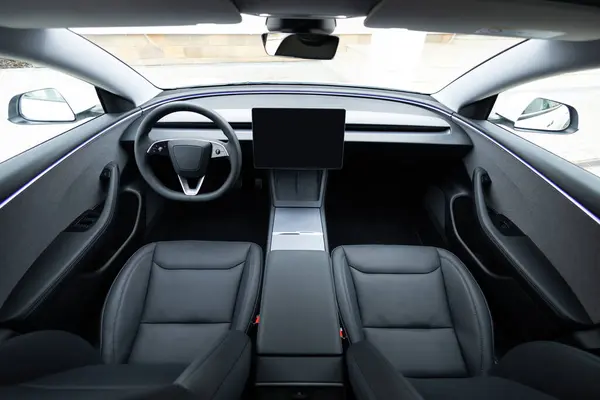In 2024, the intersection of AI-driven electric vehicles (EVs) and autonomous technology is not just a futuristic concept—it’s rapidly becoming our daily reality. According to Bloomberg Green, the global market for autonomous vehicles is projected to reach $556 billion by 2026, a staggering leap that underscores the transformative power of AI in the automotive industry. This article explores how AI-driven EVs are reshaping mobility trends, offering insights into the technologies steering this evolution and what this means for the future of transportation.
AI-Driven EVs: Revolutionizing the Road
AI and EV Integration: A Perfect Match
The integration of AI in electric vehicles is revolutionizing the driving experience. AI systems improve everything from energy efficiency to safety features. For instance, Tesla’s Autopilot uses AI to enhance its self-driving capabilities, allowing for adaptive cruise control and lane-keeping assistance. These features not only make driving safer but also more enjoyable and efficient.
- Energy Management: AI optimizes battery usage, ensuring maximum range and longevity. According to Battery University, smart algorithms can extend battery life by up to 20%.
- Predictive Maintenance: AI predicts and alerts drivers about potential mechanical issues before they become problems, reducing downtime and maintenance costs.
Autonomous Tech: The Road to Self-Driving Cars
Levels of Autonomy: Understanding the Spectrum
Autonomous vehicles are categorized into levels, from 0 (no automation) to 5 (full automation). As of 2024, most commercially available vehicles fall into levels 2 or 3. Companies like Waymo and Rivian are pushing towards higher levels, aiming for fully autonomous vehicles in the near future.
- Level 2: Partial automation, where the vehicle can control steering and acceleration but requires human oversight.
- Level 3: Conditional automation, allowing the vehicle to perform most tasks but needing human intervention when prompted.
Safety and Regulations: A Balancing Act
Safety is paramount in the deployment of autonomous vehicles. Reuters Mobility reports that regulatory bodies worldwide are working on frameworks to ensure these vehicles meet stringent safety standards. This includes rigorous testing of AI algorithms and real-world trials to minimize risks.
The Impact of AI on Mobility Trends
Shared Mobility and AI Evolution
AI is also transforming shared mobility services. Ride-sharing platforms like Uber and Lyft are experimenting with autonomous fleets to reduce costs and improve service efficiency. AI-driven data analytics help these companies optimize routes and manage vehicle dispatching, leading to shorter wait times and lower emissions.
- Cost Efficiency: Autonomous ride-sharing can reduce operational costs by up to 30%, according to InsideEVs.
- Environmental Impact: AI optimizes routes, reducing fuel consumption and emissions, contributing to cleaner urban environments.
Practical Value: Embracing the AI-Driven EV Future
How to Choose the Right AI-Enhanced EV
Selecting an AI-driven EV involves several considerations. Here are some tips to guide your decision:
- Assess Your Needs: Determine whether you need full autonomy or advanced driver-assistance systems.
- Check the Range: Look for vehicles with AI-driven energy management for extended range.
- Evaluate Safety Features: Prioritize vehicles with AI-enhanced safety systems and robust crash-test ratings.
Where to Buy AI-Driven EVs
Several brands are leading the charge in AI-driven EVs. Tesla, Rivian, and Lucid Motors offer cutting-edge models available through their websites or authorized dealerships. Additionally, Hyundai and Volkswagen are expanding their autonomous capabilities, making them worthy contenders in the 2024 market.
Charging Infrastructure: Staying Powered Up
With the rise of AI-driven EVs, charging infrastructure is more critical than ever. Companies like ChargePoint and Electrify America are expanding their networks to accommodate this growing demand. Here’s how to ensure your EV stays charged:
- Plan Your Routes: Use apps that integrate charging station locations into your journey.
- Home Charging: Install a Level 2 charger at home for faster charging times.
- Public Charging: Take advantage of fast-charging stations for quick, on-the-go power-ups.
Conclusion: Steering Towards an Autonomous Future
As we venture further into 2024, AI-driven EVs and autonomous technology are poised to redefine mobility. The synergy between AI and EV innovation promises not only to enhance our driving experiences but also to pave the way for safer, more efficient, and environmentally friendly transportation solutions. Are you ready to embrace this exciting future? Share your thoughts and predictions on how AI-driven mobility will transform our world in the comments below. The road ahead is bright, and the journey has only just begun.

